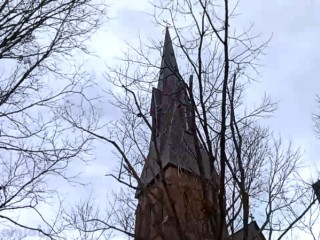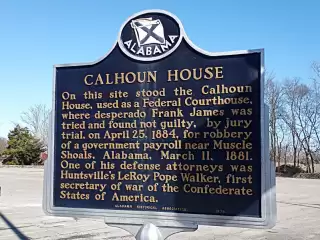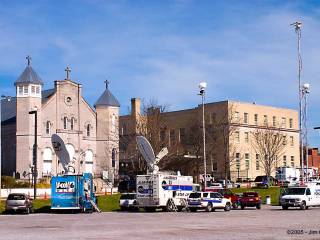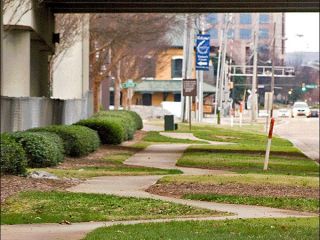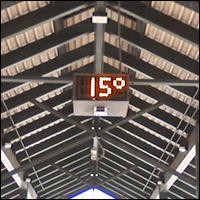Jim Casey the TOCC TV reporter goes live walkabout in downtown Huntsville yet again. This time I started at the Calhoun House historic marker at the corner of Greene Street and Eustis Avenue where the last live stream in this series left off. But first, a second look at the Episcopal Church of the Nativity and it’s origins and then a review of the trial of Frank James, older brother of infamous outlaw Jesse James, that took place when the Calhoun House was utilized as a Federal Courthouse.
Digging into more historic facts it turns out the Calhoun House was named for an infamous slave trader, Meredith Calhoun, who owned the estate by virtue of his marriage to a local girl, Mary Smith, who was the granddaughter of Judge Smith who owned the estate to begin with. Calhoun and his bride didn’t spend much time in Huntsville instead traveling in Europe and France before eventually moving to Louisiana where he owned Sugar plantations, as many as 1100 slaves, and according to some reports was known for cruelty to the slaves who worked the plantations.
When the Calhoun House was used for the trial of Frank James who was acquitted of robbery, one of his attorney’s was Leroy Pope Walker, the first Secretary of War for the Confederacy who is credited with giving the word to fire the first shots on Fort Sumter starting the Civil war. He was also the grandson of Leroy Pope, the “father” of Huntsville who settled on Echols Hill in 1809 eventually building his estate “Poplar Grove.”
In 1813 Leroy Pope entertained a visit by none other than Andrew Jackson, who would later become the 7th president of the United States, when he was enroute to the Battle of Horseshoe Bend. This live walkabout ends at the corner of Lincoln Street and Holmes Avenue where another historic marker indicates the area where Andrew Jackson’s army camped out during the journey.
Other scenes in this walkabout include the First United Methodist Church where accounts say the basement was used by federal forces during the Civil War to stable their horses. The original Church was “accidentally” burned down in 1864 by the federal forces. Further down the street I passed by the historic Huntsville Times building and a new benchmark Dollar General store before reaching the campground for Andrew Jackson’s army in October of 1813.
Watch the video for more commentary and information, and to see all the historic scenes in this remarkably small half-mile stretch in downtown Huntsville, Alabama.
©2020 – Jim Casey

